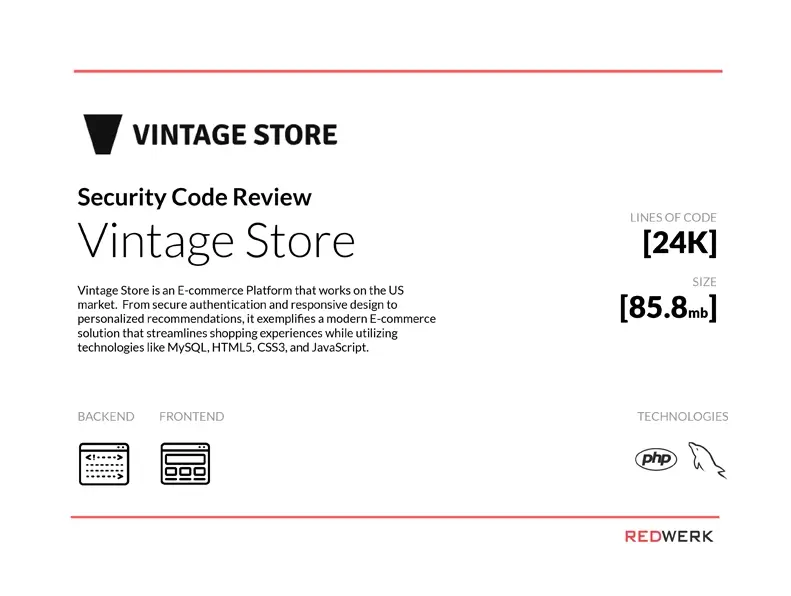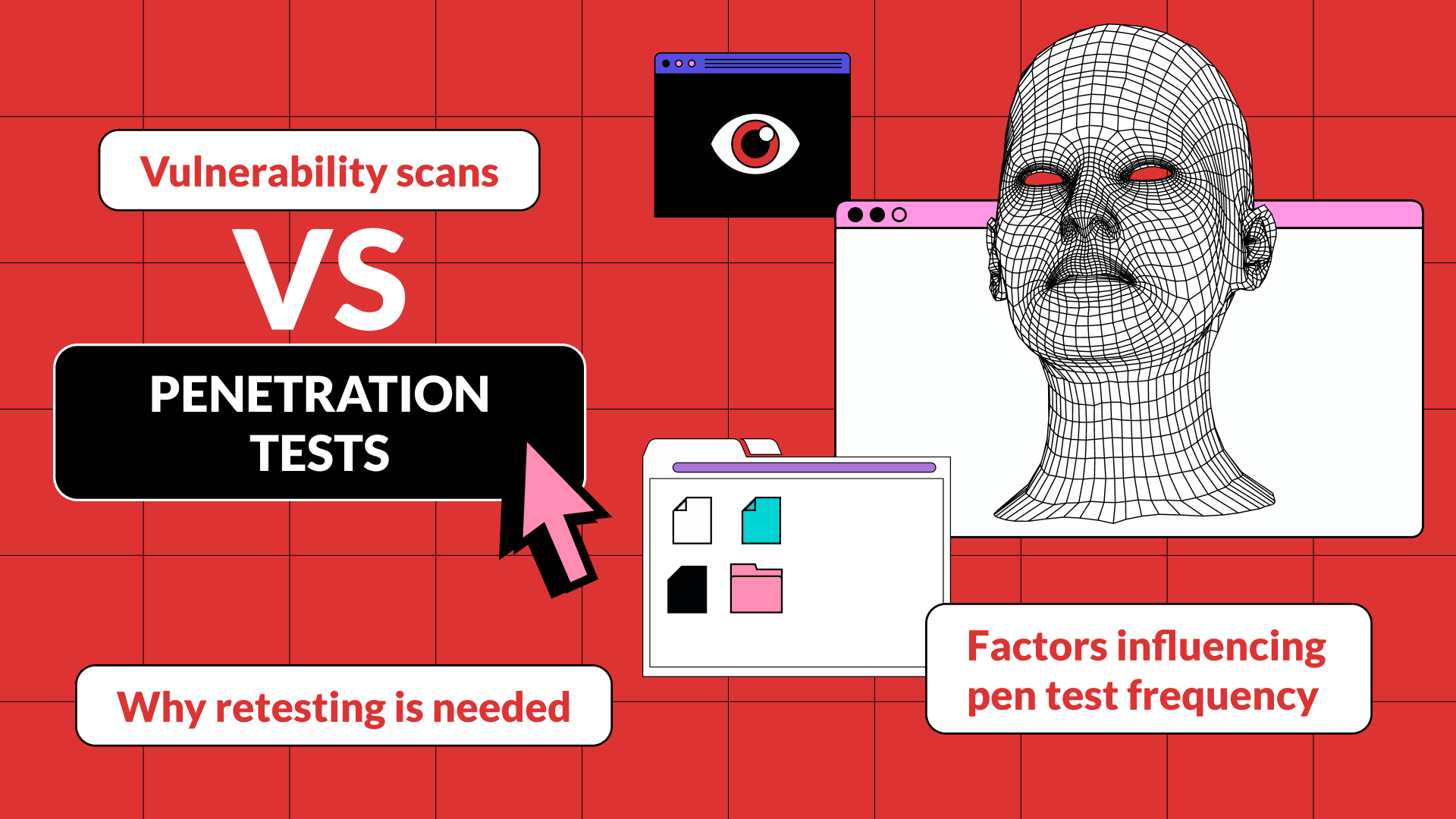No one likes reporting on data breaches and reassuring their customers that their data is still in safe hands. That’s why businesses should take proactive actions to enhance their security posture, avert cyber attacks, or at least minimize their damage.
Penetration testing has proven to be one of the most effective measures against hackers. The question lies in the test frequency. How often should companies perform penetration testing? Is the traditional “once a year” approach enough?
In this article, we’ll talk about the factors that determine penetration testing frequency, best practices, and cost-effective approaches. By the end, you’ll understand how to find the right penetration testing frequency based on your organization’s needs. Let’s go!
Understanding Penetration Testing
In simple terms, penetration testing is a simulated cyberattack in which pen testers try to exploit vulnerabilities in your computer system, network, or app. If done professionally, it poses minimal risks to business operations.
It should follow pen testing standards and happen in a controlled environment, such as during off-peak hours or scheduled maintenance windows, with non-destructive testing methods. Alternatively, it can be conducted in a staging environment that mimics the production environment to prevent potential disruptions like slowed network performance or system crashes.
Pen testers use techniques employed by real attackers, mimicking their methods to identify weaknesses. They usually combine manual testing with automation to achieve optimal results. For example, security testing tools like SQLmap automate the process of detecting and exploiting SQL injection vulnerabilities. Burp Suite simplifies testing and exploiting XSS vulnerabilities, whereas Hydra will help test defenses against automated password cracking.
Given the continuous evolution of cyber threats, the demand for penetration testing is forecast to grow. The global penetration testing market is expected to grow from 1.7 billion in 2024 to 3.9 billion by 2029. Both internal and independent penetration testing is also recommended by data protection laws and industry regulations. But its effectiveness is directly linked to the frequency with which companies conduct such tests.
How Often To Perform Penetration Tests
Many companies have a firm belief that an annual penetration test is enough to protect themselves against data breaches. Indeed, in some cases it could be sufficient and it’s a good starting point. However, the test frequency differs from company to company so you need to consider your specific risks and needs. Here are the things you need to factor in when scheduling penetration tests.
Factors Influencing Pen Test Frequency
There is no one-size-fits-all solution when it comes to the frequency of pen tests. Assess your company against the following criteria to better understand your security and pentesting needs.
Company Size and Industry
Companies in high-risk industries like healthcare, fintech, government, and e-commerce typically require more frequent testing (quarterly or even continuous) compared to low-risk businesses. They handle sensitive information like personal health records, financial transactions, payment data, or government secrets. This kind of data is exactly what hackers are looking for.
The size and the structure of a company also makes a difference. Larger organizations with complex IT environments face a higher risk of security breaches due to the extensive nature of their operations and multiple entry points for attackers. That’s why such companies may require more frequent security testing to cover all aspects of their infrastructure.
Technology Changes and Updates
Frequent system changes and deployments are great from the innovation standpoint; however, they can introduce new vulnerabilities. If your company undergoes frequent technology changes, consider quarterly or bi-annual security pen testing to catch vulnerabilities before they become exploitable.
Perform penetration testing following significant changes in the IT environment, such as:
- Deployment of New Software. Connecting new apps can introduce new loopholes for hackers to exploit. Suppose a company deploys a new CRM system to streamline data management. It conducts a pen test and uncovers an SQL injection vulnerability in the customer data query function, which could allow an attacker to access sensitive client information. Thanks to proactive penetration tests, a crisis is averted.
- Major Software Update. Every line of code written holds the potential for security flaws. Adding new features or functionalities involves writing new code, which can harbor vulnerabilities if not thoroughly tested. For example, an online banking platform rolls out a major update to enhance user experience. Its pentesting report reveals a cross-site scripting (XSS) vulnerability that could allow attackers to execute malicious scripts in users’ browsers.
- Infrastructure Changes. Upgrading or modifying network infrastructure, such as adding new servers or migrating to the cloud, can create security gaps. Imagine a growing e-commerce company decides to upgrade its servers to accommodate increased traffic. Post-upgrade, the company tests new server configurations, network connectivity, and access controls. The security penetration test identifies an open port that was unintentionally left exposed, potentially allowing unauthorized access.
- Integration of Third-Party Services. Integrating third-party services or APIs can expose a company to additional risks. Let’s explore a scenario where an online retailer integrates a third-party payment gateway to enhance its checkout process. The retailer hires a pen tester to check the integration points between their website and the payment gateway. The pen test shows a vulnerability in the API that could allow an attacker to intercept and manipulate transaction data.
Regular testing in response to technology changes helps maintain a strong security posture by continuously identifying and mitigating new risks.
Past Security Incidents
Companies that have already experienced breaches are more likely to be targeted again. These incidents highlight potential weaknesses in the organization’s defenses and underscore the need for regular testing to prevent recurrence.
If your organization has a history of security incidents, you need to conduct a detailed analysis of past cyber attacks to identify the root causes. This involves examining how the attackers gained access, what vulnerabilities were exploited, and why existing defenses failed. These insights will help tailor penetration testing efforts and define optimal test frequency.
For example, if a breach occurred due to a compromised third-party plugin, focus penetration tests on third-party integrations to verify if other plugins are free from vulnerabilities. Depending on the outcome, you may need to remove or update vulnerable plugins and implement stricter vetting processes for third-party software.
Recommended Pen Testing Frequency
Penetration testing is a complex undertaking and definitely not something you can do daily. Let’s break down some general recommendations for how often different types of businesses should conduct penetration tests:
- Annual Testing: provides a baseline level of security assurance. It’s the right fit for low-risk industries and smaller companies that do not handle privacy-sensitive data and experience infrequent technological changes.
- Bi-Annual Testing: provides a good balance for most organizations, offering a more proactive approach to security while remaining cost-effective.
- Quarterly Testing: is ideal for high-risk industries, companies handling confidential data, and those with frequent system changes. It allows for closer monitoring and quicker remediation of vulnerabilities.
- Continuous Penetration Testing: involves ongoing vulnerability scanning and ethical hacking attempts. It’s best suited for organizations with critical infrastructure or extremely sensitive data, where even a minor breach could have catastrophic consequences.
- Event-Driven Testing: should be conducted after a major system overhaul, following a security breach, or when new threats have emerged.
By tailoring penetration testing frequency to their specific needs and risks, companies can remain resilient to ever-evolving cyber threats.
Vulnerability Scans vs Penetration Tests
It’s also important to differentiate between the frequency of vulnerability scans and penetration tests.
Vulnerability scans are automated tests that continuously identify potential weaknesses in your systems and software. If you wonder how often systems should be scanned, the recommended frequency can range from weekly to monthly. They provide a valuable first line of defense but can sometimes miss complex vulnerabilities or fail to assess their true exploitability.
Penetration tests provide a more accurate assessment of your security controls. A pentester may employ a multi-layered approach, chaining various exploits together to break through layers of defenses. Even if a vulnerability scan does not detect known vulnerabilities, the pen tester can gain enough knowledge about the system to identify security gaps.
DIFFERENCE BETWEEN VULNERABILITY SCANNING AND PENETRATION TESTING
Approach
Automated
Manual (with some automation)
Depth
Quick overview of potential weaknesses
Identifying and exploiting critical vulnerabilities
Frequency
Weekly or monthly
Quarterly, bi-annual, annual
Skills
Basic IT knowledge
Advanced security expertise
Cost
Less expensive
More expensive
What Regulators Say About Pen Test Frequency
Many data security regulations require conducting regular penetration testing. This further proves the importance of penetration tests in identifying vulnerabilities before hackers start knocking on your doors. Let’s go over the most common regulations and what they mandate:
- PCI DSS (Payment Card Industry Data Security Standard): recommends both internal and external penetration testing at least annually and after any changes to segmentation controls/methods; service providers are required to perform bi-annual penetration tests.
- HIPAA (Health Insurance Portability and Accountability Act): HIPAA doesn’t explicitly require penetration testing, but its Security Rule mandates a security risk assessment that must include an analysis of vulnerabilities, which can be achieved through penetration testing.
- SOC 2 (Service Organization Controls): requires penetration testing as part of its security controls, but the specific frequency is determined by the company depending on its risks.
- ISO 27001 (International Organization for Standardization): recommends penetration testing as a control to ensure information security, but leaves the frequency up to the organization based on its risk assessment.
Why Retesting Is Needed
First, you need to ensure that all the discovered vulnerabilities are patched properly and the fixes are effective, so initial penetration tests are always followed by retesting.
Secondly, penetration testing is a snapshot in time. New vulnerabilities can emerge later, so the previous pentesting report will no longer be valid. In case a zero-day exploit is discovered in a system you use, such as CMS, retesting is necessary.
Finally, in case of a security incident, retesting can help ensure that the attack vector used by the hackers has been closed and there are no other vulnerabilities that could be exploited in a similar manner.
Finding the Sweet Spot
Striking a balance between enhancing your security posture and using your resources wisely is no easy task. Even though cybersecurity is not a luxury but a necessity, it can definitely feel like one. Pen testing can be quite expensive, and depending on the scope of work needed, it can cost anywhere from $4000 to $100,000.
As an established penetration testing company, we know how to help our clients achieve their security goals in a cost-effective way. Today, we’ll share with you some of those tips:
- Adopt a risk-based approach: Focus your penetration testing efforts on high-risk areas first
- Implement tiered testing: Test high-risk areas quarterly and low-risk systems annually
- Use automated tools: Leverage vulnerability scanners that are less resource-intensive compared to pen tests and can be run more frequently
- Try open-source solutions: There are plenty of free scanning and pen testing tools that can fully meet the needs of small businesses
With these strategies, you can establish a cost-effective and efficient penetration testing program that strengthens your security posture without exceeding your budget.
Summing Up
Penetration testing should be an ongoing process, not a one-time event. It requires careful planning, high technical expertise, and consistency to prove its worth. By making penetration testing part of your security strategy, you can proactively identify and address vulnerabilities, adapt to evolving threats, and safeguard your data.
Contact us today for a free consultation and discover how we can help you get started with penetration testing and build a more secure future for your organization.
FAQ
How often should penetration testing be done?
The ideal frequency for penetration testing depends on your industry, sensitivity of the data you handle, innovation pace and your release schedules, as well as regulatory compliance.
How often should vulnerability scans be performed?
For companies in high-risk industries like finance or healthcare weekly or even bi-weekly scans are recommended. For companies with a moderate risk profile, monthly vulnerability scans will suffice.
What are pentesting standards?
Pentesting standards are established guidelines that help ensure consistency, reliability, and effectiveness of penetration tests. They provide a framework for planning, executing, reporting, and following up on penetration testing engagements. Some of the most prominent pen testing standards include the OWASP Testing Guide, PTES, and NIST.
Yours Free: Security Code Review Sample


